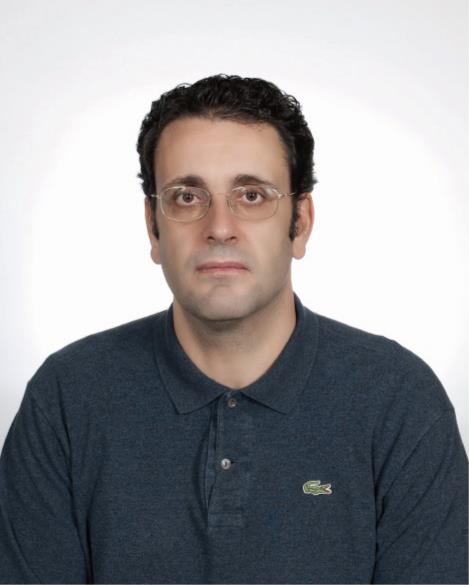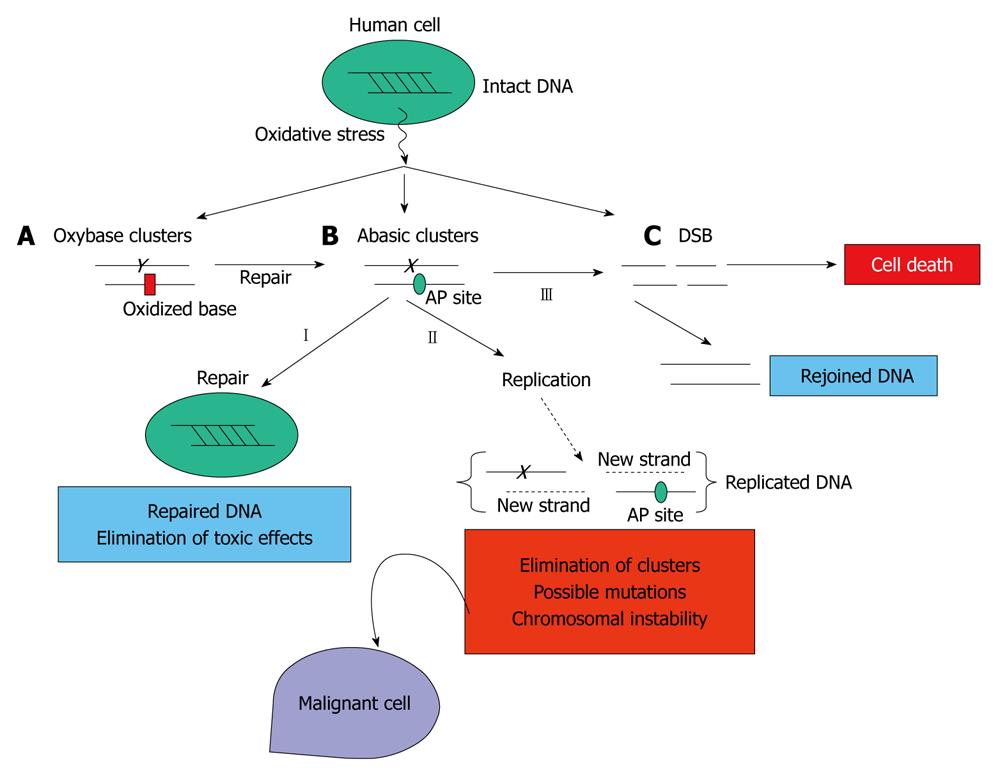Copyright
©2011 Baishideng Publishing Group Co.
World J Biol Chem. Jul 26, 2011; 2(7): 173-176
Published online Jul 26, 2011. doi: 10.4331/wjbc.v2.i7.173
Published online Jul 26, 2011. doi: 10.4331/wjbc.v2.i7.173
Figure 1 Alexandros Georgakilas, PhD, Associate Professor, DNA Damage and Repair Laboratory, Department of Biology, Thomas Harriot College of Arts and Sciences, Howell Science Complex, East Carolina University, Greenville, NC 27858, United States.
Figure 2 A proposed model for the processing of bi-stranded oxidative clustered DNA lesions in human cells and tissues.
Endogenous (metabolic byproducts) and/or exogenous (e.g. radiation, chemicals) oxidative stress induces different types of clustered lesions (A and B), as well as prompt double strand breaks (DSBs) (C). Here for simplicity, one type of oxybase (A) and abasic (B) clusters is shown i.e. the oxybase cluster containing only oxybases and the abasic cluster containing one oxidized base and one abasic (AP) site. The highlighted arrows indicate the preferred repair pathways based o n present knowledge, and accepting the hypothesis that the human cell will try to avoid the pathway of simultaneous repair of both lesions leading to DSB formation (III). Instead, it is suggested that pathway (I) may be chosen and clusters will be repaired efficiently. Alternatively, cells may enter DNA replication without clusters being repaired, and in that case, although bi-stranded clusters cannot be detected, the existence of DNA lesions can lead to accumulation of oxidative DNA damage and mutations (II). Chromosomal instability can occur, along with potential transformation and malignancy. Finally, the formation of DSBs may lead to cell death or genomic instability if not repaired efficiently as shown.
- Citation: Georgakilas A. Detection of clustered DNA lesions: Biological and clinical applications. World J Biol Chem 2011; 2(7): 173-176
- URL: https://www.wjgnet.com/1949-8454/full/v2/i7/173.htm
- DOI: https://dx.doi.org/10.4331/wjbc.v2.i7.173










